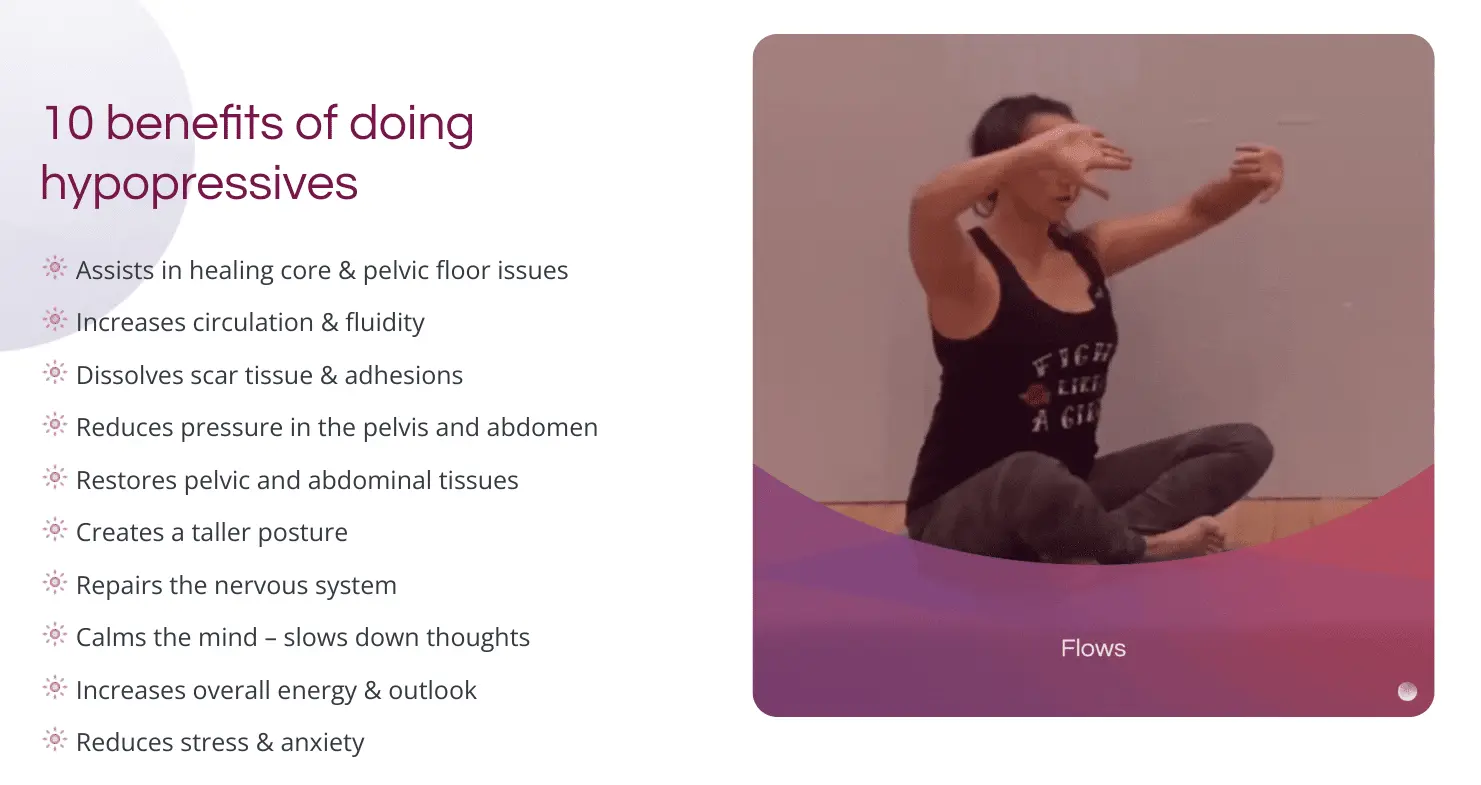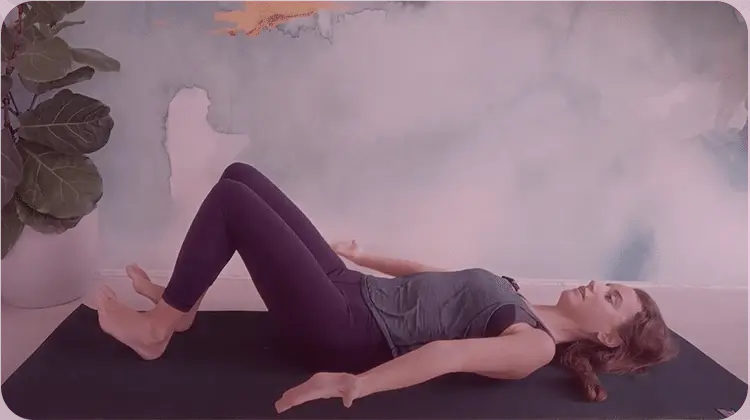Diastasis Recti vs Hernia – How To Know The Difference?
- June 9, 2022
- Diastasis Recti

Mommy Tummy. Mommy Pooch. Mommy Belly. Mom Bod.
You’ve heard all these names before. And they all have something in common — the struggle to embrace your body after giving birth. According to a survey, mothers are more self-conscious about their bellies than any other body part.
Do you feel the same way?
If you do, well… we want to remind you that you’re a powerful, beautiful, and sensational woman! Your body carried, fed, and gave life to your little one. Nothing compares to the amount of strength and love you need to bring a human into the world and embark on the lifelong path of motherhood. It’s truly incredible!
Give yourself some credit and lots of love.
Yet, it’s true that your body changes during and after pregnancy, but there’s something natural you can do about the way it looks! Your belly may not need to lose fat. It may actually look and feel the way it does because of diastasis recti.
In this blog, we’ll tell you all about diastasis recti (mommy pooch) along with natural (and proper) remedies to heal it. In addition, we’ll explain the differences between diastasis recti and a hernia, so there’s no confusion between the two.
What is Diastasis Recti?
Diastasis means “separation” while Recti refers to your ab muscles known as “rectus abdominis”.
A diastasis recti abdominis (DRA) is a midline separation of the rectus abdominis (6-pack muscle) due to stretching, thinning, and weakening of the connective tissue — called the linea alba.
To be called a diastasis recti, the separation of the abdominal wall must be at least 2 fingers wide. But it’s not only about having a wide separation, but also about a deepness. We don’t want it too squishy that your fingers can easily sink into your stomach!
What Causes Diastatsis Recti?
Diastasis Recti occurs due to excessive inner-abdominal pressure. It can happen to pregnant women, newborn babies, postmenopausal women, and even men.
1. Pregnancy:
As your uterus expands during childbearing, your abdominal muscles and its connective tissues also stretch. This pressure and pushing during delivery contributes to developing diastasis.
2. Newborn Babies:
Some infants (especially if they are premature or have an African-American descent) are born with diastasis, which becomes more noticeable when they sit up or laugh. The condition usually goes away by itself, but it’s important that a pediatrician monitors the condition to make sure it doesn’t get worse.
3. Other Risk Factors:
Postmenopausal women and even men may experience diastasis, especially if they’ve been practicing a yo-yo diet, and lifting weights, or doing sit-ups incorrectly.
How Do I Know If I Have Diastasis Recti? (Symptoms)
The most common symptoms of diastasis recti are coning, tenting, or doming in the middle of your belly that’s more visible when exercising the abdominal muscles.
Additional symptoms include lower back, pelvic, or hip pain, poor posture, constipation, bloating, and feeling weak through the midsection.
But the key indicator of having a diastasis is the distance and depth of the gap between the ridges of your rectus abdominis muscle.
Here’s how to do a self-assessment:
• Carefully lie down and place your feet on the ground with your knees pointing up.
• Put your hands on your sternum and use your fingers to measure the gap’s distance. Do this at rest and do it again while your head is 1-inch from the ground to know if the distance changes.
• Check how deep the gap is both at rest and with your head an inch from the ground.
• Slowly get up. Roll to your side first before standing.
A diastasis should measure 2-fingers wide or more. If your gap feels more taut when lifting your head compared to when it’s at rest, your recovery will likely be faster because your linea alba can hold more tension. But if not, this could mean that the tissues are weaker and may take longer to recover.
Important Note:
• Since diastasis is a natural part of pregnancy, it’s best to assess your gap about 6-10 weeks postpartum.
• Doing exercises too early and aggressively may worsen your condition.
• For accuracy, don’t assess your gap if your stomach is full.
Can you Heal Diastasis Recti
Without Surgery?
Yes! Diastasis recti can be prevented and reversed through retraining the right muscles in coordination with your diaphragm and pelvic floor.
But isn’t surgery the best solution? Not really. Although surgery may be necessary for severe cases, without strengthening your core, it can reoccur anyway, especially when having another baby.
Here’s a good place to start, before undergoing surgery:
• Maintain good posture.
• Make sure your lower back is supported, especially when sitting.
• Get up or stand up slowly and carefully, with the help of your arms to lift yourself (avoid engaging your core muscles).
• Don’t do any strenuous exercises until your diastasis improves.
Get rid of hemorrhoids and rectal prolapse naturally!
In our Pelvic Floor Dysfunction, you’ll learn exercises and methods to help restore & rehabilitate your pelvic floor health. With a strong and healthy pelvic floor, many symptoms of rectal prolapse and hemorrhoids go away.
Here are some of the benefits of joining the NKS:
• Get a dedicated health guide
• Receive a personal total pelvic care plan
• Get access to short but powerful sessions
• Weekly check-ins to track your progress
• A caring community of like-minded women
• Create a flexible schedule on your own terms
Become your own success story
Every part of your body is interconnected, so regardless of whether it’s hemorrhoids or rectal prolapse, the best way to counter it is through holistic healing. Believe me, a strong yet flexible pelvic floor will help you be a better, stronger, and healthier you!
What is a Hernia & How is it Different From Diastasis Recti?
A hernia is a tear or damage to the muscles/tissues in your abdominal wall that causes your internal organ or intestine to protrude or bulge out from your abdomen or groin.
Unlike diastasis recti, a hernia is not just stretching — it’s a hole in the fascia (the connective tissue that holds every organ, blood vessel, bone, nerve fiber, and muscle intact). You may even feel an aching or burning sensation in your groin when lifting, laughing, or exercising if you have one.
Hernias are classified based on their location and the most common are:
• inguinal hernia (inner groin)
• femoral hernia (outer groin)
• umbilical hernia (belly button)
• hiatal hernia (upper stomach)
• incisional hernia (resulting from an incision)
Other types of hernia’s include:
• epigastric hernia
(between the navel and lower part of the breastbone)
• ventral hernia
(above the belly button in the middle of the abdomen)
• diaphragmatic hernia
(organs in the abdomen move to the chest through the diaphragm)
What Causes A Hernia?
Like diastasis recti, a hernia is caused by excessive pressure in the abdomen, but also a weakness in the muscle or fascia.
It becomes more common as we age and may worsen when lifting heavy objects, especially if it’s done improperly.
Also, other factors like diarrhea or constipation, extreme coughing or sneezing, multiple childbirths, obesity, poor nutrition, and smoking can aggravate a hernia. There are various types of hernias (depending on where they are located), but the umbilical hernia is most commonly confused with a diastasis recti.
How Do I know if I Have Umbilical Hernia? (Symptoms)
The most common symptom of an umbilical hernia is a bulging belly button (an outie) whether or not you’re pregnant.
But additional indications may include:
• Tender and painful skin when touching the abdomen
• A bump right above the belly button
• You feel pain or discomfort when laughing, coughing, sneezing, lifting, exercising, climbing, or standing quickly
• There is an increase in pain and size of the bulge
• Bloating or feeling full
Men with a hernia may also notice swelling or bulge in the groin or scrotum (the bag of skin that holds and protects the testicles).
All of these symptoms, however, can be mistaken for something else. So, if you suspect you have a hernia, see a doctor so he or she may perform a thorough physical examination and possibly an imaging test to precisely diagnose your condition.
A hernia is a tear or damage to the muscles / tissues in your abdominal wall that causes your internal organ or intestine to protrude or bulge out from your abdomen or groin.
Unlike diastasis recti, a hernia is not just stretching — it’s a hole in the fascia (the connective tissue that holds every organ, blood vessel, bone, nerve fiber, and muscle intact). You may even feel an aching or burning sensation in your groin when lifting, laughing or exercising if you have one.
Hernias are classified based on their location and the most common are:
• inguinal hernia (inner groin)
• femoral hernia (outer groin)
• umbilical hernia (belly button)
• hiatal hernia (upper stomach)
• incisional hernia (resulting from an incision)
Other types of hernia’s include:
• epigastric hernia
(between the navel and lower part of the breastbone)
• ventral hernia
(above the belly button in the middle of the abdomen)
• diaphragmatic hernia
(organs in the abdomen move to the chest through the diaphragm)
What Causes A Hernia?
Like diastasis recti, a hernia is caused by excessive pressure in the abdomen, but also a weakness in the muscle or fascia.
It becomes more common as we age and may worsen when lifting heavy objects, especially if it’s done improperly.
Also, other factors like diarrhea or constipation, extreme coughing or sneezing, multiple childbirths, obesity, poor nutrition, and smoking can aggravate a hernia. There are various types of hernias (depending on where they are located), but the umbilical hernia is most commonly confused with a diastasis recti.
How Do I know if I Have Umbilical Hernia? (Symptoms)
The most common symptom of an umbilical hernia is a bulging belly button (an outie) whether or not you’re pregnant.
But additional indications may include:
• Tender and painful skin when touching the abdomen
• A bump right above the belly button
• You feel pain or discomfort when laughing, coughing, sneezing, lifting, exercising, climbing, or standing quickly
• There is an increase in pain and size of the bulge
• Bloating or feeling full
Men with a hernia may also notice swelling or bulge in the groin or scrotum (the bag of skin that holds and protects the testicles).
All of these symptoms, however, can be mistaken for something else. So, if you suspect you have a hernia, see a doctor so he or she may perform a thorough physical examination and possibly an imaging test to precisely diagnose your condition.
Can You Heal A Hernia Without
Surgery?

Many people think a hernia doesn’t go away without surgery — NOT TRUE. It would actually depend on the size and severity of your symptoms.
The majority of hernias aren’t life-threatening, but they don’t go away on their own, so it needs an intervention before it develops further complications. During its early stages, a hernia can have no symptoms at all.
But if you’ve already been diagnosed with one, following a fiber-rich diet, drinking water regularly, and avoiding extreme activities would be a great way to prevent further problems.
And of course, because complete healing involves holistic healing, we also share some natural methods and solutions that you can adapt into your everyday life.
You’ll find these below. We got you!
Can Diastasis Recti Cause a Hernia?
It’s possible that a diastasis recti could turn into a hernia if it’s left untreated.
Not only that, since your abdominal muscles work in coordination with your pelvic floor, ignoring your condition may also affect your overall pelvic floor health. In severe cases, it could make you more vulnerable to poor core stabilization, constipation, back or pelvic pain, painful intercourse, and other pelvic floor dysfunctions including urinary incontinence and prolapse.
But it’s never too late to heal!
Even if you’ve had diastasis recti, or a hernia for years or decades, healing is possible. It begins with educating yourself about your condition, maintaining a healthy lifestyle, avoiding incorrect exercises or activities, and retraining your deep core muscles.
When Should You Be Concerned?
A hernia that’s not addressed may lead to complications. The worst stages of hernia are incarceration and strangulation.
It is considered incarcerated if a fatty tissue or a part of the intestine is trapped in the groin. When this happens, you will notice a lump that doesn’t go away and you won’t be able to pass your bowels or gas. This needs immediate medical attention as it may lead to strangulation.
During strangulation, the blood supply to the herniated tissue is cut off and may release toxins and infection into the bloodstream.
This is life-threatening and must be addressed within 24 hours!
Aside from the inability to move your bowels or pass gas, symptoms of a strangulated hernia may include:
• Nausea
• Vomiting
• Increasing pain in the stomach or a lump in the groin
• Fever
• The herniated bulge turning to red/purple/dark
Remember: Surgery should be your last resort when it comes to hernia, unless it’s an emergency situation. If you do have surgery, it’s important to strengthen your deep core muscles appropriately to keep a hernia or diastasis from returning.
Are There Risks To Diastasis & Hernia Surgery?
Any invasive procedure poses risks and several potential side effects, including the need to have another operation.
Some risks associated with diastasis and hernia surgeries include, but are not limited to:
• Recurrences – the return of your hernia
• Bowel obstruction – including constipation or slow bowel movements
• Bladder problems – inability or difficulty urinating and incontinence
• Infection – infection at the incision site that can spread throughout the body
• Extensive scarring or adhesions
• Mesh erosion – lethal – mesh implant must be removed immediately
• Hemorrhage – internal bleeding
• Fistula – abnormal opening between two organs
• Seroma – a pocket of clear serous fluid formed under the surgical wound
• Hematoma – blood collects and pools under the skin showing a bad bruise
• Wound dehiscence – reopening of a surgical incision either internally or externally
• Visceral injury – injury to internal organs
• Neuralgia – sharp pain that follows the path of a nerve causing tingling or numbness
Treatment Options for Diastasis Recti and Hernia (No Surgery)
MoonRise believe in a holistic approach to treatment. This kind of approach addresses the root cause of the problem rather than just the visible issue (what’s unbearable at the moment).
Hear me out:
Let’s say you have diastasis recti or a hernia. The root cause is the weakness of your core muscles and tissues.
What happens when you have it? Your 6-pack muscles separate abnormally, causing some organs to protrude or be displaced. And what does surgery do? It places the organs back to their normal places and stitches the area with synthetic mesh to support the abdominal wall.
But if the cause is the weakness of your core muscles and tissues, shouldn’t we be strengthening it instead? And repairing the connective tissues that keep our organs in their proper place? That’s right.
This is why surgery, while useful in an emergency, is not beneficial in the long run. It’s a quick fix, but it’s not the best solution because it doesn’t heal you from the inside out, which is what you truly need. This is what the body needs and is asking of you.
Here are better ways to resolve your diastasis or hernia :
• Maintaining Proper Posture – a good posture improves blood circulation, digestion, and reduces fatigue and strain on your body’s ligaments and muscles.
• Clean Eating – consuming whole foods (that grow from the earth) instead of processed ones (that ‘grow’ inside a lab) will fill your body with vitamins and minerals that can speed up recovery and improve your overall wellness.
• Hypopressives – a series of breathing and postural exercises that don’t place additional strain on the connective tissues. When doing hypopressives, you learn how to engage your pelvic floor properly, which in turn helps to pull the two halves of the abdominal muscles together.
• Visualization and Affirmation – the effectiveness of believing that you can heal is not just a theory. Visualizing and affirming your desired outcome reconditions your subconscious mind, and creates neurons that transmit your words and imagery into an impulse that you eventually perform. In other words, they have the ability to change your reality for the better.
What Doctors Don’t Tell You About Natural Healing
Look & Feel Good Inside & Out
in the MoonRise Community!
The “mommy belly” is more than a cosmetic concern. Diastasis recti and hernia have been affecting a woman’s body image and self-esteem for a long time. No one deserves to feel defeated and insecure. You don’t have to live like that anymore.
MoonRise exists to assist women of different ages, races, and health conditions live a healthy, happy, fulfilled life to become their best self.
At MoonRise, you won’t have to go through it alone, ever again.
We’re a community that lifts each other up through friendly, guided, action-oriented video programs that have been passionately tailored for every woman on their unique healing journey.
Blog posts you might like:






